
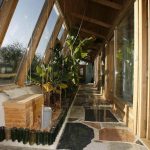
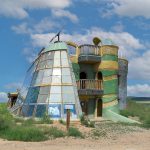
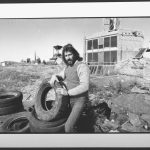

If you venture into the beautiful, desolate desert of New Mexico, you may come across some fantastic, unconventional houses (some palatial and sculpturally rounded; others shaped like an ancient temple) that look like something out of a movie. from “Star Wars.”
Located in and around the city of Taos, where they were invented almost 40 years ago, these are the Earthshipssustainably designed, net-zero homes built primarily from natural and waste materials such as old tires, empty wine bottles, wood, and clay.
Because the construction of the Earthships Requiring fewer toxic or carbon-emitting building materials such as concrete and plastics, these exquisite homes are increasingly sought after around the world.
Earthships sell for between $500,000 and $900,000, and are also available for overnight stays in and around Taos for about $240 a night.
The Earthship movement began in Taos in the 1970s after Michael Reynolds, A Kentucky native and founder of the green building company Earthship Biotecture, he moved here in 1969 after earning his degree in architecture.
His goal was “to ride dirt bikes, for fun,” he says.
The man, now 71 years old, had a moment of inspiration.
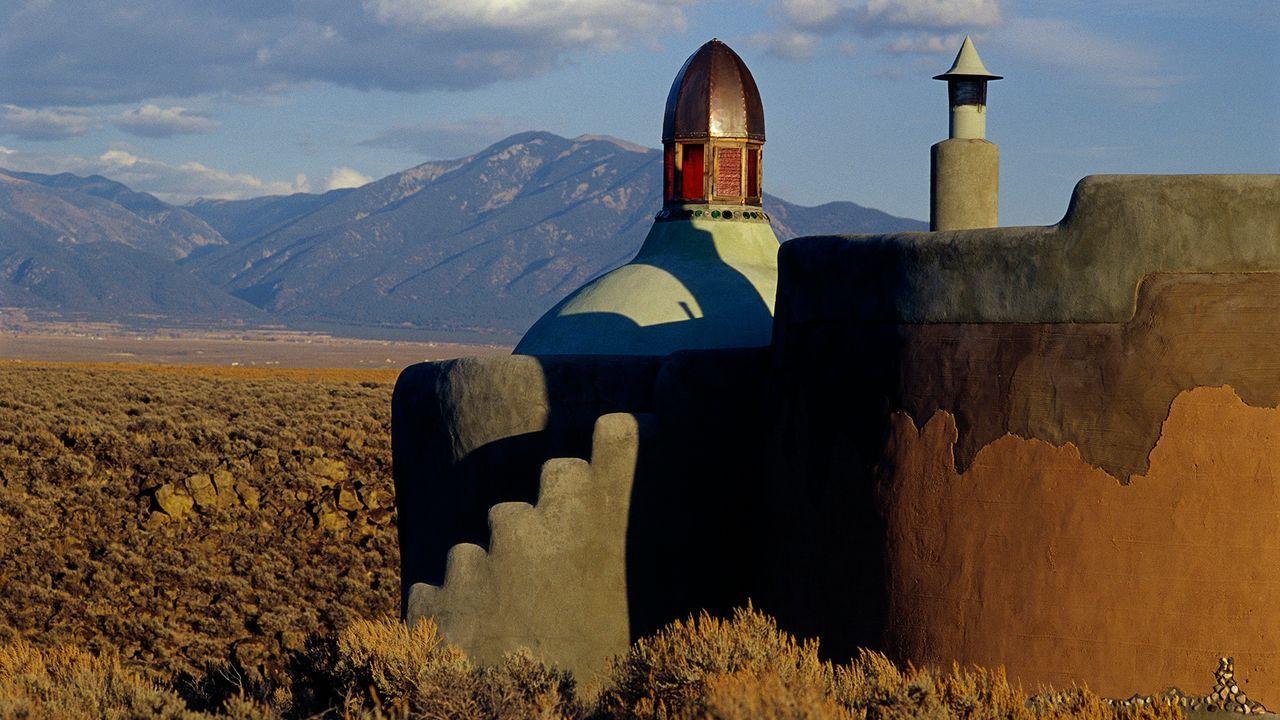
The idea
“I saw Walter Cronkite [presentador de noticias de CBS News] talking about cutting down forests for wood, which not only creates erosion, but also an oxygen problem because trees emit oxygen,” Reynolds tells the BBC.
“He was talking about what we now call climate change and global warming. I saw all those beer cans thrown in the trash and I said, ‘Why don’t we build with beer cans and not trees?’”
Reynolds built his beer can house in 1971, and it didn’t receive much attention in the news for its quirkiness.
However, it was exhibited in various parts of the world, including the Louvre Museum in Paris and the Museum of Modern Art (MoMA) in New York City.
Reynolds notes, with some disbelief, that “MoMA just bought a brick made from beer cans for $4,500.”
In fact, after using one of the beer can building blocks in an exhibition, the museum decided to add one to its permanent collection.
Still, for years he was considered, at best, a crank and not a serious architect.
“It was kind of a naive and ridiculous idea, but I went ahead and started going in that direction,” Reynolds says.
“I started using bottles and tires, and kept going. I’ve been at this address for easily 55 years, and then about 36 years ago I first tagged a house Earthship.”
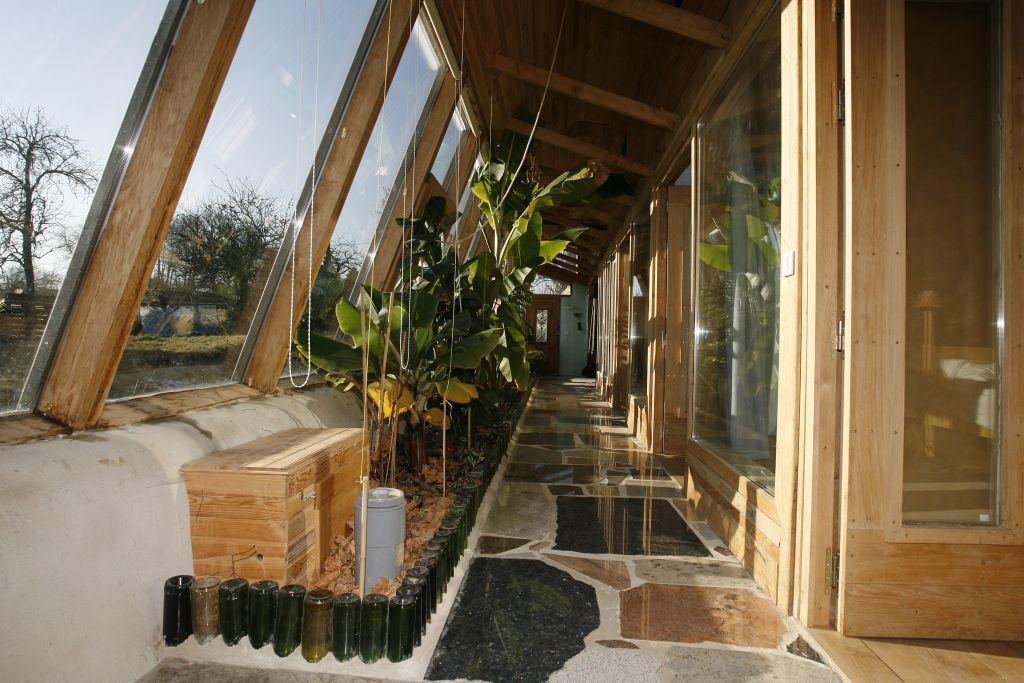
How they work
But it has taken a long time to get to the point of broader acceptance.
“You know, they seemed too strange and they still seem strange, but now people are understanding it, and they are also open to them because [muchos] “They are on the verge of becoming homeless and crippled by electric and utility bills,” Reynolds says of the financially empowering aspect of living off the grid.
“And now people want to reverse climate change.”
Taos is a place that has long attracted artists and individualists.
Its old town (village) and newer town have striking architecture, mostly traditional wood-beamed adobe houses, whose roofs are made of wood and rammed earth.
Taos was the perfect incubator for the Earthships houses, which have a thick wall of tires, each filled with dirt.
An embankment (a purpose-built bank of earth) surrounds the Earthships on three sides, providing an insulating mass that controls the temperature.
Cooling is provided through traditional transom windows placed high on the support beams for cross ventilation, and through the building’s vents.
Each has a greenhouse (since Reynolds believes that people should have the ability to grow their own food), either on the north or south side, depending on the location.
Most Earthships are powered solely by solar energy; some also have wind turbines as an add-on or a wood stove as a backup.
Taos has cold, snowy winters and often hot, dry summers, but on an Earthship, the internal temperature remains close to 21°C year-round, regardless of external weather conditions.
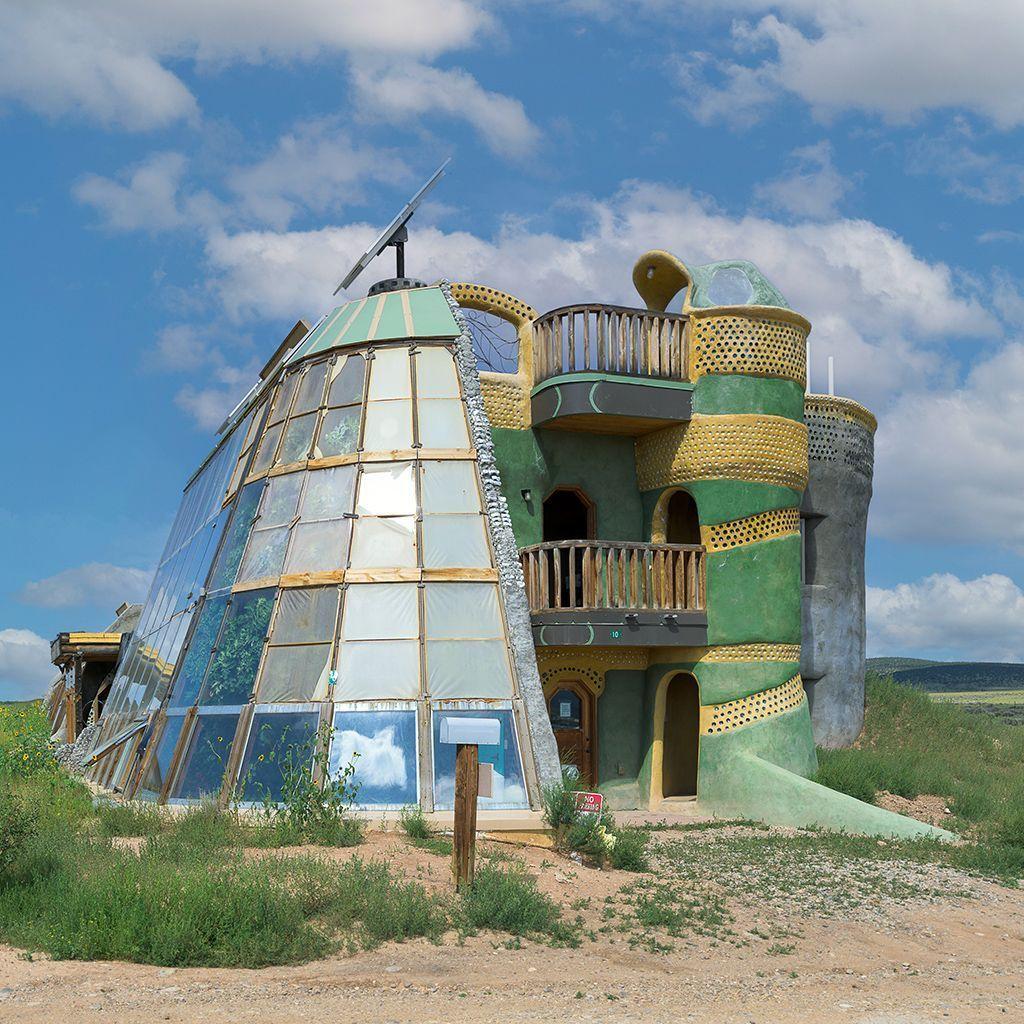
“We don’t want to leave”
Reynolds moved to his first Earthship 35 years ago, he says, and raised his family there. He still lives there: “It’s so comfortable that we don’t want to leave,” he says.
What does it feel like to be inside an Earthship? “It feels like you’re in the womb,” says Earthship construction manager Deborah Binder.
“You feel constantly hugged and snuggled. The temperature is always pleasant. “Sometimes, when it is very cold outside, I go out without a coat without realizing it, because it is very hot inside.”
Binder joined the company 11 years ago to manage a nonprofit project in Malawi, Africa, without any construction experience, he says.
Not only did he stay in the company, Instead, he moved to Taos and is currently renting an Earthship while he builds his own.
Binder also teaches at the Earthship Academy, which attracts students of all types to learn Earthship design principles, construction methods, and philosophy.
“Most people want to learn for themselves,” says Binder. “Some learn to build for community projects.”
Despite their environmental appeal, Earthships are still not accepted as an option to alleviate the housing crisis and climate change.
“In a way, they’re still on the sidelines,” Binder says. “It is very important that people live in one of them. The feeling you have when living in them is unique, and in practice you do not pay utility bills. “That’s pretty amazing.”
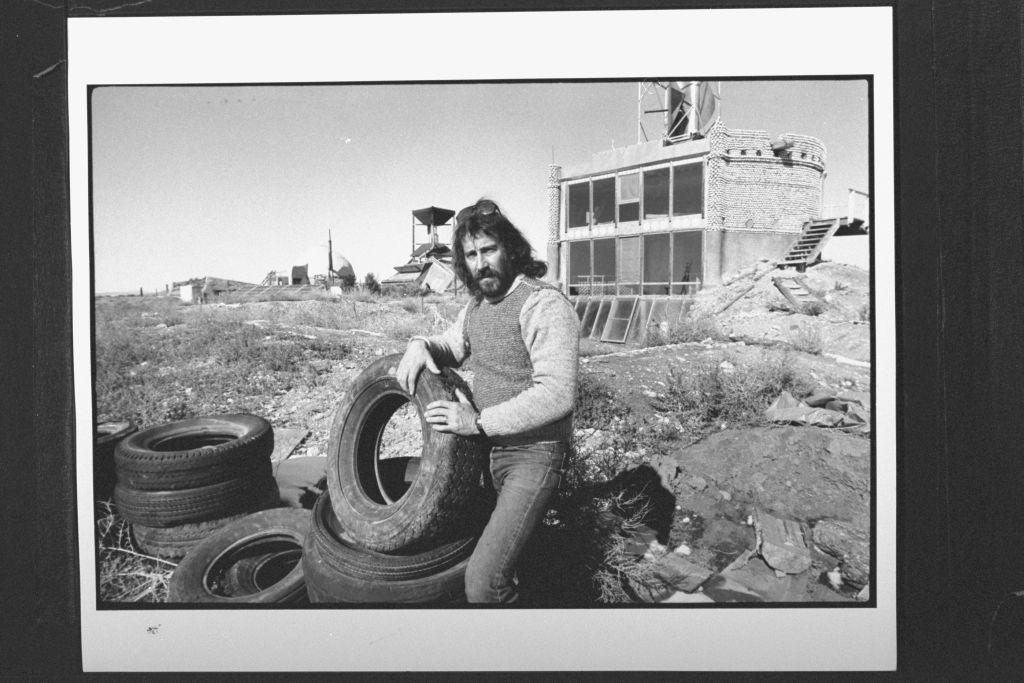
all over the world
“Once people try them, they usually want one,” Reynolds adds, something confirmed by the numerous glowing testimonials in the guest books posted at each Earthship rental.
Reynolds believes it couldn’t be more timely, even urgent, to make Earthships the norm.
Its goal is to build rentable community housing as a response to homelessness and planet-destroying energy consumption.
“I’m not so interested in commissions; “Having a client makes me slow down,” he says. “I need to produce them quickly and rent them to people for a fair rent.”
Reynolds is full steam ahead with his latest simplified Refuge Earthship model, which he believes could help combat homelessness and poverty due to the simple economic issue of not paying huge utility bills each month.
“Refuge is the most economical model built; which we are going to replicate throughout the world,” he states passionately.
Then there’s the extravagant Atlantis, a striking curvy turquoise landship, created as an example of the sculptural and artistic side of buildings.
“They have an artistic side: I played with the bottles as stained glass, and there is the sculptural aspect. They are beautiful,” says Reynolds, who put himself through college by working as an artist.
“What’s really beautiful is that they take care of people while taking care of the planet. Nothing has as much meaning in art as a house does.”
This article appeared on BBC Travel. You can read the original version in English here.

And remember that you can receive notifications in our app. Download the latest version and activate them.
